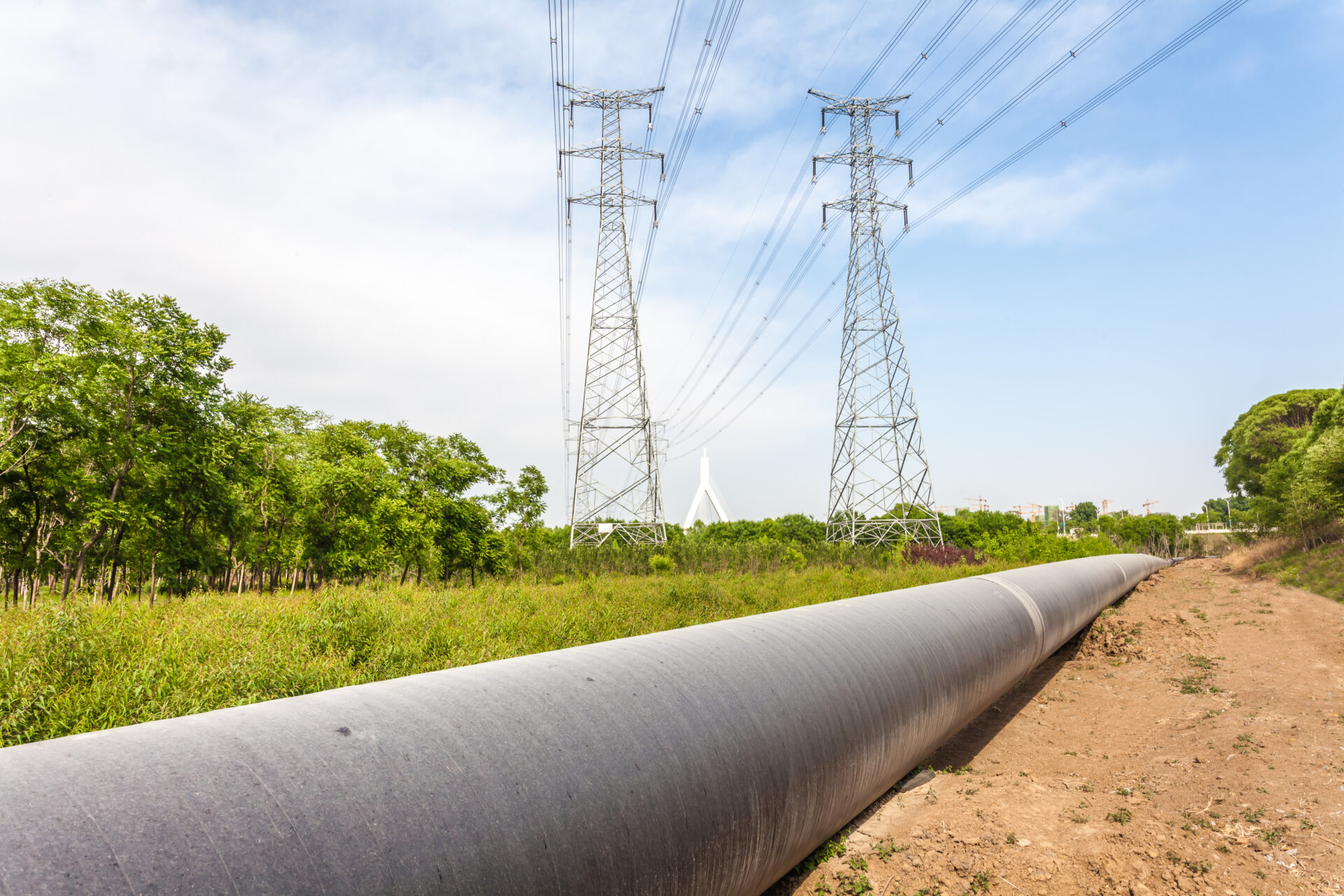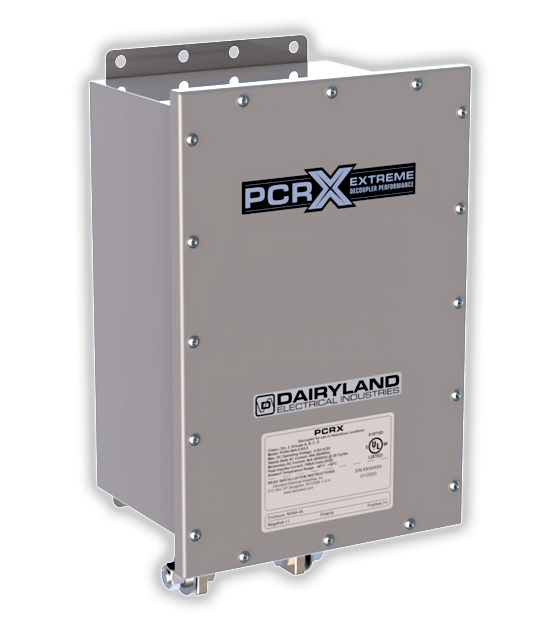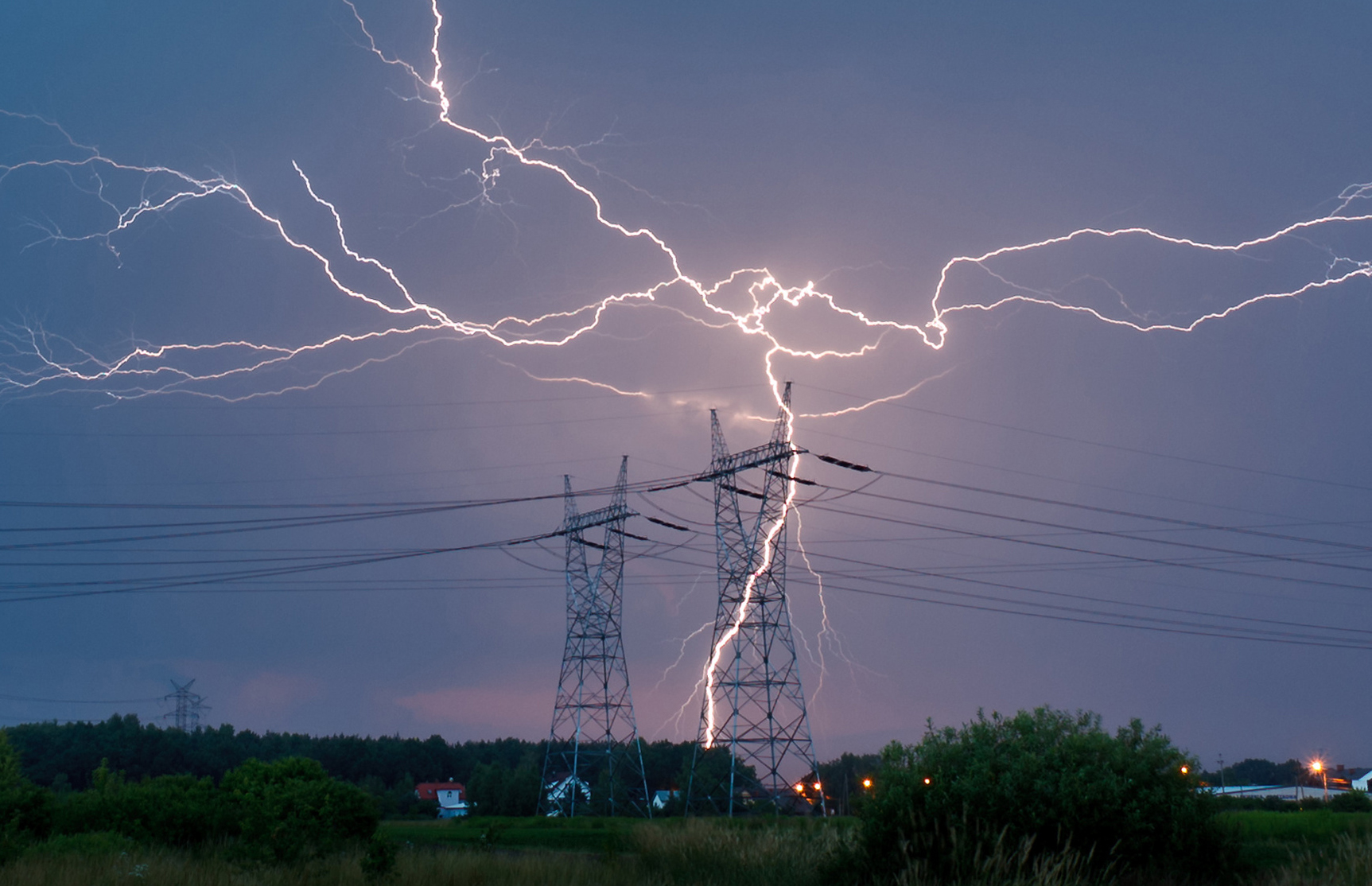Safety Considerations In AC Mitigation Applications

With increasing frequency, corrosion industry professionals are being asked to address induced AC that occurs when pipelines are located in common corridors with overhead powerlines. When working on AC Mitigation projects, one of the primary goals is to minimize voltage levels between two points of contact. Not only is this crucial for personnel safety, but it’s also important for keeping your equipment protected. Over-voltage differences could result from a single event, such as a utility fault or lightning strike, or be constantly present due to induced AC from nearby High Voltage AC (HVAC) lines.
Worker Safety
These voltage differences can reach unsafe levels and create a significant worker safety risk. Personnel can make contact between two points having a voltage differential at an isolation flange (touching each side simultaneously), between a pipeline and a ground, between two grounding systems, as well as a single grounding system where a voltage gradient could exist in the earth.
If a person makes contact between two points with a high voltage difference that are not referenced to each other, there can be a significant risk of injury or death. According to AMPP SP0177, as well as IEEE Standard 80 “Guide for Safety in AC Substation Grounding”, a maximum of 15 Volts AC is the safe “let go” criteria, which means operators must mitigate the risk to below these levels to adequately protect workers.
Equipment Protection
Personnel safety is not the only risk. High voltage differences from lightning and AC faults could also cause damage to the equipment itself, or the isolation materials used at isolation flanges, causing damage to the flange components. Just like the criteria for personnel safety, equipment and products have voltage limits that need to be mitigated in order to protect those items and prevent costly damage to system components.
Protect Personnel and Equipment – Use a Decoupler

A decoupler plays an integral role in any AC mitigation design by helping to address concerns for both worker safety and equipment protection. While grounding is required to address safety and equipment concerns outlined above, isolation is required to maintain an effective CP system. Decouplers are appropriately rated to handle over-voltage conditions while simultaneously providing CP system isolation, protecting the integrity of your CP while also protecting your personnel and equipment.
Don’t Forget! Important Safety Considerations
Effectively utilizing decouplers in your AC mitigation applications will help to minimize voltage differences to safe levels for both personnel and equipment. Therefore, consider the following important safety tips:

Address Lightning Concerns
Lightning strikes are very fast, violent over-voltage events. Protective products need to be capable of handling the forceful, fast nature of a lightning strike or they could fail in catastrophic fashion. All Dairyland products have a significant lightning current rating, ensuring continued operation after a lightning event. In addition, the installation method of a decoupler is also critically important.
Safety Tip #1 Keep Conductor Lengths as Short as Possible
Conductor length used to connect a Dairyland decoupler is a critical component of proper installation. Conductors with lightning current flowing through them will have a significant voltage drop along the length of the conductor. Conductors have an inherent inductance, and the greater the inductance the higher the voltage spike during the event, making it critical to keep the conductors as short as possible. Not familiar with inductance? Read more about it here: Conductor Length Effects Upon Over-Voltage Protection From Lightning Conditions
When dealing with buried pipelines, it may be difficult to keep lead lengths as short as possible, which could limit the use of decouplers in this scenario. However, when dealing with above-grade isolation joints and gradient control mats, it is important to keep lead lengths as short as possible.
Address AC Faults
A decoupler is an integral part of an effective AC mitigation system. AC faults have different properties than lightning surges and need to be considered when using a decoupler in your AC mitigation system. An AC fault from an HVAC line lasts much longer than a lightning surge (milliseconds vs microseconds) and AC faults have greater total energy. Preparing for an AC fault when using a decoupler is a two part process.
Safety Tip #2 Identify the Right Sized Decoupler for AC Faults
Most AC mitigation projects have moderate exposure to AC faults. Dairyland offers a wide variety of fault current ratings (1.2kA up through 15kA). Typical fault rating selections range from 3.7kA up to 10kA, and are suitable for most applications. However, if the pipeline is in close proximity to a power line grounding system, this will greatly increase the exposure of the pipeline and coatings to fault current and lightning. Make sure you carefully consider the application that you are addressing, and whether AC fault current could be coupled to the pipe in addition to the pipeline’s proximity to the utility.
While this is a complex topic, more information can be found here: Determining AC Fault Current Our technical support team is available to provide additional guidance as well.
Safety Tip #3 Select the Right Conductor Size for AC Faults
Beyond selecting the appropriately sized decoupler, installation methods are a critical component of properly addressing AC fault risk. Utilizing the right conductor size to ensure it can withstand the maximum energy from an AC fault current event is critical to system performance. Choosing the correct conductor ensures that it will be capable of handling the potential fault current levels at that location. The below chart shows the recommended conductor size in relation to the fault rating of the decoupler.
| AC Fault Current Rating | Wire Size (AWG) |
| 1.2kA, 2.0kA, 3.7kA | #6 |
| 5kA, 10kA | #2 |
| 15kA | #2/0 |
If you should have any questions regarding the information in this article, please feel free to contact us at techsupport@dairyland.com.
Want To Dive Deeper?
Join One of Our Learning Events.
Our event schedule provides you the in-depth product and application training you need to correctly apply Dairyland products.